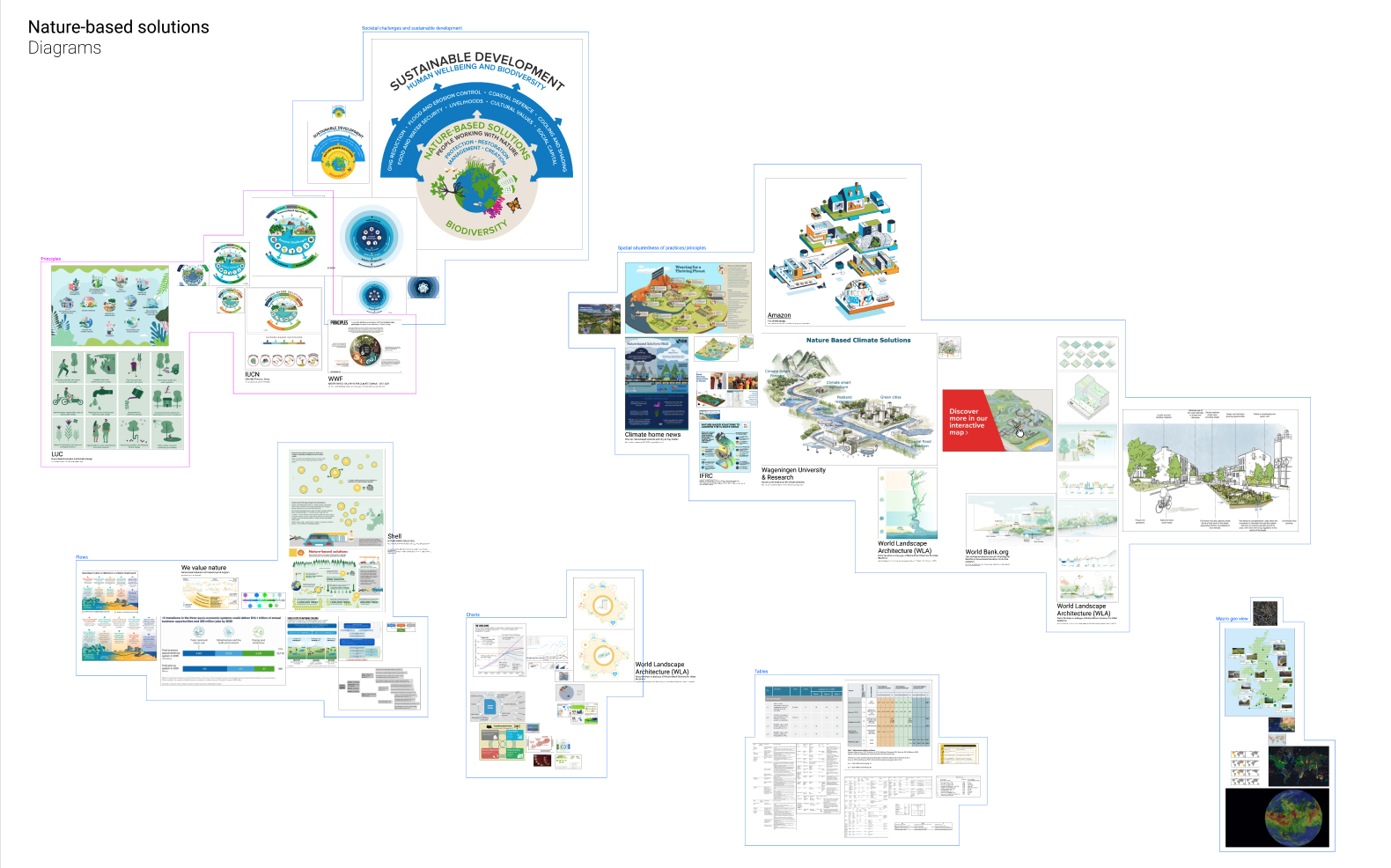Mapping the politics of "nature-based solutions" with Global Witness
July 21, 2022
Over the past few months, I’ve been part of a collaborative research project to map the politics of nature-based solutions together with Global Witness, the Public Data Lab, the departments of digital humanities and geography at King’s College London and DensityDesign Lab in Milan. The project was supported with a grant from the Natural Environment Research Council (NERC).
Global Witness have published a blog post highlighting some of the learnings from the project so far, which you can read in full here and from which an excerpt is copied below. We’ll add materials and links to the project page as further parts of this work are published.
Sometime in the past decade, “nature-based solutions” (NBS) began to feature in both corporate and international policy discussions on climate change, usually alongside descriptions of efforts to either increase carbon storage or limit greenhouse gas emissions.
Big polluters have spent decades denying climate change. Now, they’re using greenwashing and other tactics to promote false solutions to the climate crisis that distract and delay. We are challenging this and pushing for regulatory changes to hold them accountable by preventing companies from misleading the public about their environmental impact and forcing them instead to take meaningful action to meet global climate goals.
Alert to these patterns of corporate greenwashing, we wanted to investigate whether big polluters are using NBS to present false solutions to their climate-damaging practices, helping them maintain their social license. In a joint digital methods project with King’s College London, PEBES, the Public Data Lab and Politecnico di Milano’s DensityDesign Lab, we set out to empirically explore the digital existence of NBS.
We sought to answer the following questions: When did the notion of NBS first appear online? Who, corporate or otherwise, uses it the most? Has there been an evolution in who uses it, when they use it and where? And, importantly: what can we learn about the potential co-option of the term by looking at its origins and trajectory?
